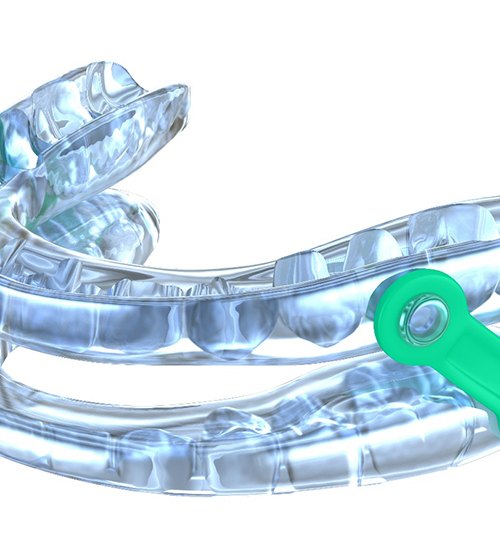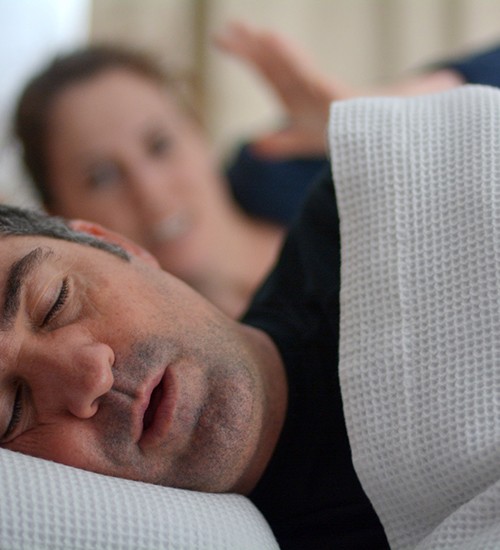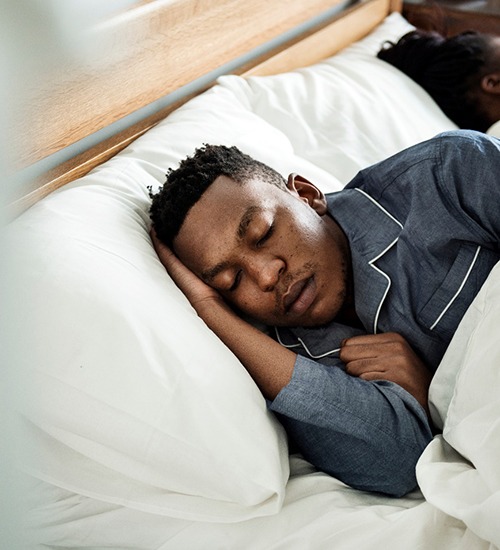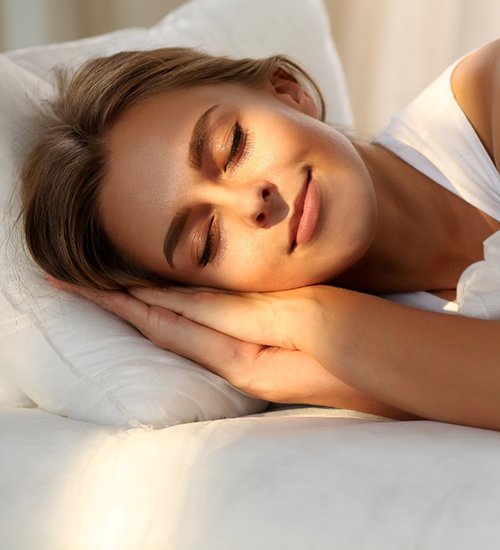
Oral Appliance Therapy – San Ramon, CA
Personalized Sleep Apnea Treatment
Have you tried managing your sleep apnea symptoms with CPAP therapy only to find that you were unable to tolerate the machine? To get the quality slumber you need, it may be a good idea to switch to another form of sleep apnea treatment – namely, personalized oral appliances provided by the experts at Oak Ridge Dental. Give us a call if you’re interested in pursuing a more comfortable solution to sleep-disordered breathing.
Why Choose Oak Ridge Dental for Oral Appliance Therapy?
- Fully Customized Oral Appliances
- Multiple Dental Experts Under One Roof
- Variety of Insurance Plans Accepted
What is Oral Appliance Therapy?

Oral appliance therapy is a method for treating sleep apnea, a disorder that repeatedly interrupts your breathing while you’re asleep. The way an oral appliance works is very simple: all you need to do is put it in your mouth before you go to bed. It will move your jaw slightly forward, which can lower the chances of airway obstructions occurring. Don’t worry about comfort; the oral appliance will be designed with your unique mouth in mind.
Who's a Good Candidate for Oral Appliance Therapy?

Is oral appliance therapy viable in your case? That depends on how severe your sleep disorder is. Usually, oral appliances work best for patients who have mild or moderate sleep apnea. Of course, before you pursue any sort of treatment, you need to receive a proper diagnosis. Talk to your doctor about having a sleep test performed. Once it has been confirmed that you have sleep apnea, you can contact us to ask about oral appliance therapy.
What Are the Benefits of Oral Appliance Therapy?

There are several reasons why plenty of patients choose oral appliance therapy to get their sleep apnea symptoms under control:
- Oral appliance therapy is noninvasive.
- Wearing an oral appliance at night can go a long way toward helping you get the quality sleep you need, thus causing you to feel less tired during the day.
- An oral appliance is convenient to travel with.
- Each oral appliance is personalized according to the patient’s needs.
How Can Oral Appliance Therapy Help CPAP Patients?

CPAP therapy is often seen as the gold standard for treating sleep apnea. Despite that, however, many patients still choose to make the switch to oral appliances. There are a few reasons for this.
First of all, there’s the matter of comfort. Some people have a hard time tolerating the masks used for CPAP therapy but find oral appliances to be easier to wear. On top of that, a CPAP machine can make a lot of noise while you’re trying to sleep. Meanwhile, oral appliances don’t make any sounds, so they won’t disturb you or other nearby sleepers.
Note that sometimes oral appliance therapy can sometimes be combined with CPAP therapy. This often makes it possible to use a lower setting on the CPAP machine since the oral appliance is already helping to maintain an open airway.
Oral Appliance Therapy FAQs
Who Should Not Get a Sleep Apnea Oral Appliance?
While oral appliances have helped many patients get their sleep apnea symptoms under control, they are not for everyone. Generally speaking, an oral appliance may not be recommended in your case if:
- Your sleep apnea is particularly severe.
- You don’t have enough teeth to support an oral appliance.
- Your teeth are more sensitive than normal.
- You have central sleep apnea (which is caused by the brain failing to send the signals needed to control breathing, rather than the airway being obstructed).
The best form of treatment for sleep apnea depends on the patient’s specific circumstances. This is part of the reason why a sleep test is so important; confirming the nature and severity of your sleep disorder is critical for determining whether an oral appliance is truly right for you.
Can I Get an Oral Appliance for Sleep Apnea If I Grind My Teeth?
Oftentimes, sleep apnea is accompanied by bruxism, which is a condition that causes you to grind your teeth at night. Fortunately, bruxism will not affect your candidacy for an oral appliance. This is because the appliances used to treat sleep apnea are highly durable and can withstand the forces of grinding and clenching.
Furthermore, it’s worth noting that your oral appliance will effectively act as a barrier between your upper and lower rows of teeth, stopping them from making direct contact with each other. As a result, an oral appliance can actually help you protect your smile from damage related to bruxism.
Are Oral Appliances for Sleep Apnea Covered by Insurance?
The answer to this question depends on which insurance plan you have. Some insurance companies are indeed willing to offer some level of coverage for oral appliances meant to treat sleep apnea. Note that the treatment is usually covered by medical insurance rather than dental insurance.
There are a number of factors that can influence how much your insurance company is willing to pay for any given service. It’s highly recommended that you review your insurance plan to make sure that you have a clear idea of what is and isn’t covered before you move forward with treatment of any kind.
How Long Does It Take to Get an Oral Appliance for Sleep Apnea?
Once you have confirmed that an oral appliance is a viable option for treating sleep apnea, having one made typically takes about two to three weeks. At your first appointment, an impression will be taken of your teeth. A specialized lab will use the impression as a reference to create an oral appliance that fits comfortably in your unique mouth. When the appliance is ready, it will be sent back to our office. A second appointment will be held to confirm that it fits properly and to make any necessary last-minute adjustments.



